Fashion Photography Retouching: A Modern Workflow Guide with Aftershoot
We see the art in fashion, but what about the artist?
Behind every flawless editorial lies a photographer wrestling with a thousand tiny imperfections: over-smoothing skin, mismatched tones, and inconsistent edits. Fashion retouching can feel like a never-ending battle, especially when deadlines are tight and the pressure to deliver perfection is high.
In this guide, we’re breaking down what fashion photography retouching really looks like today. From what makes an image look truly ready for editorial to how AI is transforming the post-production game.
Summary
Photographers have a love-hate relationship with retouching tools on the market today.
Most require them to retouch every pixel on every shot, contributing to decision fatigue with too many little decisions. To make things worse, they often end up with a waxy-looking output.
If edits and retouching could be batch processed, to get the style consistency you desire in the first pass, it's a lot easier to zoom in on the details and fix the additional stuff that makes your shots wow!
This is exactly why we built Aftershoot's Retouching tool, so you can have entire galleries with consistent, natural-looking results. We'll get into the nitty-gritty on the product and how you can benefit from it in this article.
Take AI Retouching on a quick spin. Try it out 30 days for free, no questions asked!

AI + Manual Retouching: What’s the Right Mix for Fashion Photographers?
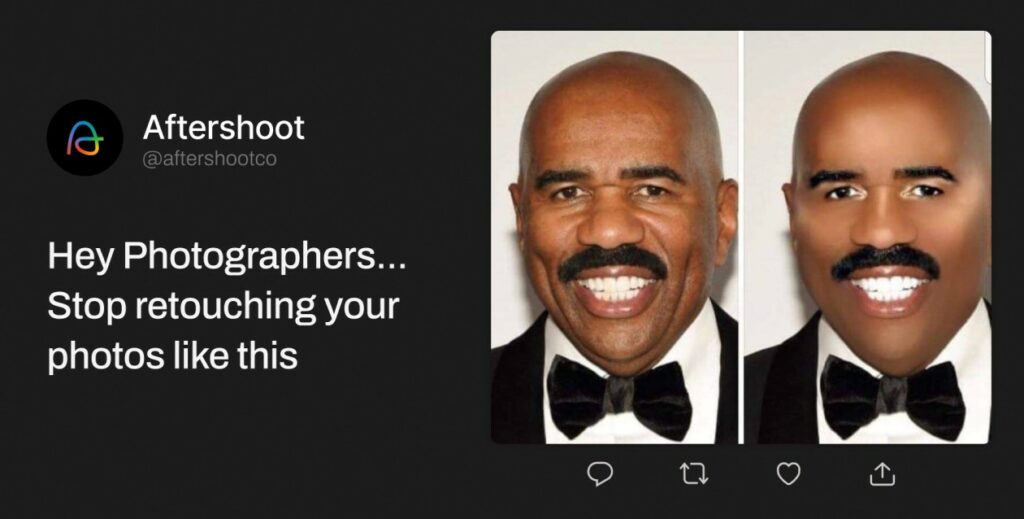
Agreed! Let's stop this.
Manual retouching works best when you have the time. But on most editorial jobs, you don’t. This is where AI retouching steps in: not to replace you, but to support the fast-paced reality of fashion photography. Tools like Aftershoot handle the foundational fixes that are often deferred to post anyway:
- Skin smoothing
- Blemish removal
- Fixing stray hairs
- Whitening teeth
- Batch processing for consistency across the entire shoot
AI helps bridge the gap between the on-set compromises and the polished, editorial look clients expect. With AI, that post-production process becomes faster, more consistent, and less exhausting. Aftershoot gives you clean, natural-looking results so you can focus your energy on final polish and creative decisions, not hours of repetitive cleanup.
It’s Not Either/Or. It’s You + AI
You Know These Retouching Mistakes. Here’s How to Work Smarter
- Plastic-looking skin: Over-smoothing makes your subject look like a figure at the wax museum. Let AI handle base corrections so you don’t have to backtrack.
- Tone inconsistency across looks: One gallery, ten different vibes? Sync your edit settings to a reference image or use AI to apply consistent edits across the board.
- Fixating only on skin: Don’t let flyaways, outfit wrinkles, or background clutter ruin the shot. Prioritize what pulls the eye. Object removal tools come quite handy in these cases to give you that finish your clients love.
- Editing in the wrong style: High-gloss or gritty editorial? Use tools that let you customize for client expectations.
- Wasting time on non-essentials: If you’re spending hours on minor fixes, you’re doing it the hard way. Automate the basics and save your brain for the creative calls.
💡 Want to to build a retouching workflow that actually works for you? Try it free for 30 days!
Now let's jump right into the workflow. If you prefer watching a video instead, here’s a quick guide on how to retouch fashion photos with Aftershoot.
Step-by-Step Fashion Retouching Workflow with Aftershoot
Time is everything in fashion. You're not just racing the clock, you’re racing client deadlines, editorial calendars, and sometimes even the next trend. Here's how you can streamline their retouching process without compromising on quality:
Step 1: Import your photos to Aftershoot
We will start with the repetitive, time consuming clean up process that we can quickly do with AI retouching tools.
Option A) If you are currently using Aftershoot to cull and edit your images, you will need to export your edited images and import them as JPEG or TIFF
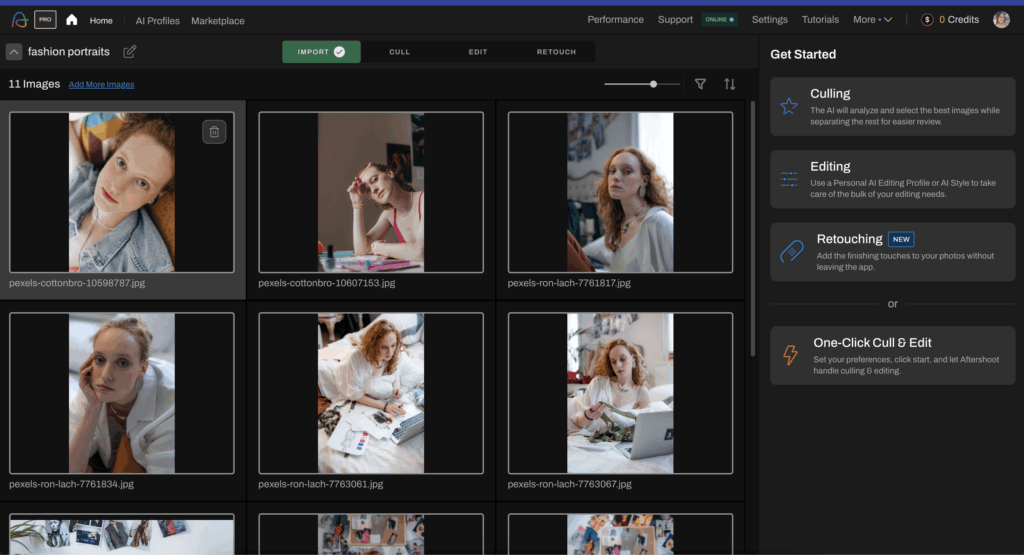
Option B) If you’re working in Lightroom Classic, you can easily retouch with AI using our integration. Just select the images you want, right-click, and choose “Edit in Aftershoot” to open them directly in Aftershoot.
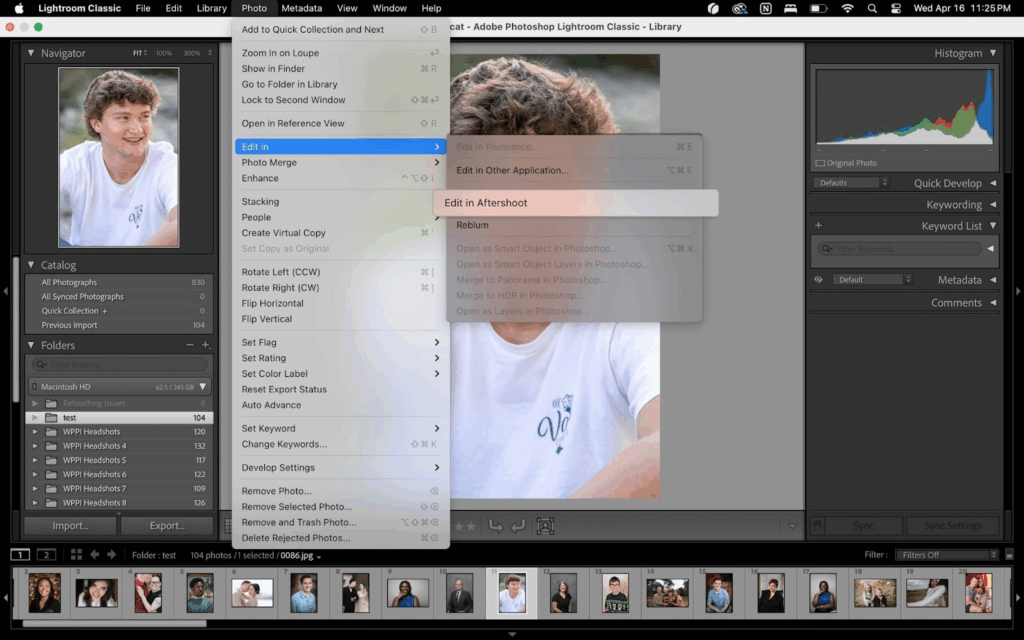
Step 2: Move to Retouch Tab
Once you’ve imported the images, move to the retouch tab. You will find a range of options on the right panel to retouch skin, hair, teeth etc. You can check out Aftershoot’s AI Retouching Early Release blog for more details
Step 2A): If there are multiple people in the image, you can select by person (masculine, feminine, child, elderly) to apply different retouching settings
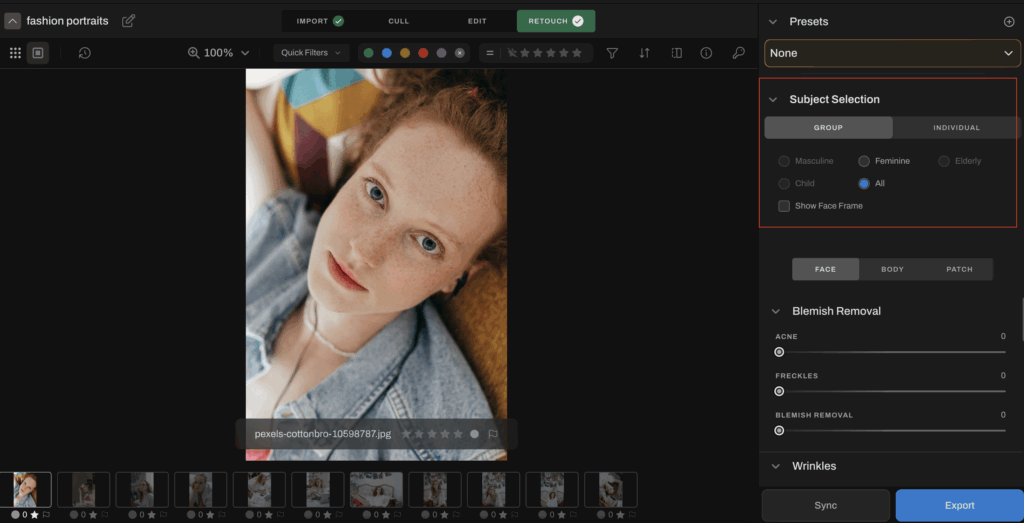
Step 2B) If you need to clean your shots further, you can use the patch tool to remove unwanted elements such as people in the background, trees etc, to keep only what fits your vision
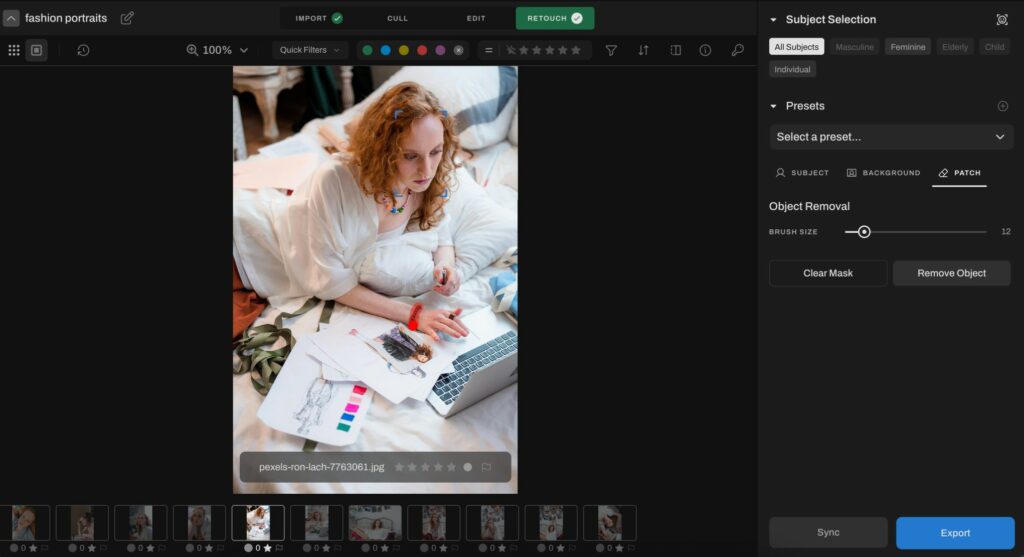
Step 3: Sync and Apply
Once you're happy with your edits, you can either sync the settings across a batch of images or apply any existing retouching presets in Aftershoot
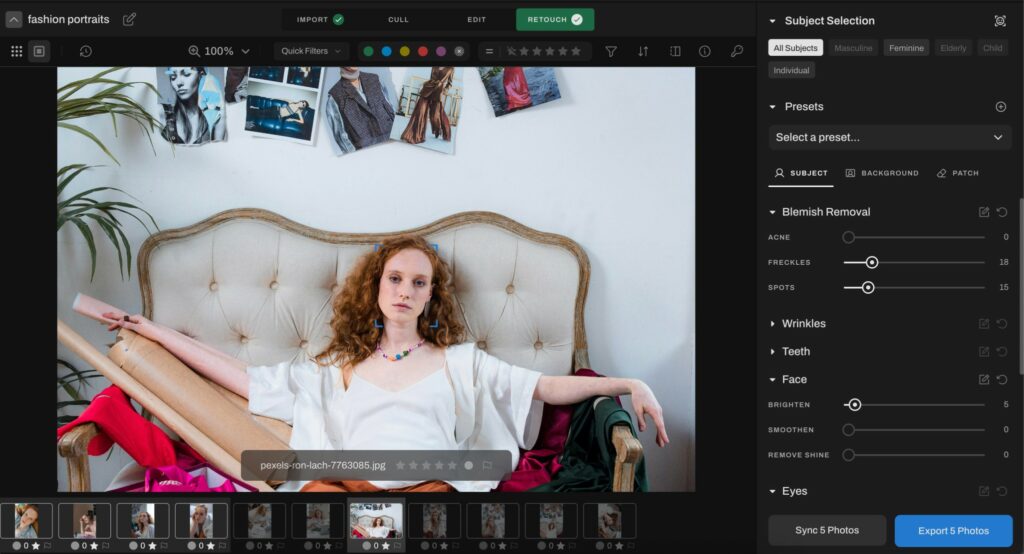
Pro tip: Once done, see the difference instantly: Aftershoot lets you toggle between the original and retouched versions of your image, so you can fine-tune your edits in real time.
Step 4: Export for finishing touches
Now that you’ve taken care of skin cleanup, blemish removal, and initial enhancements, setting the stage for your signature edits becomes easy.
Simply export your retouched images and bring them into Adobe Lightroom, Capture One, or your preferred editing software to continue your workflow without missing a beat.
And voila, your images are ready for editorial review. Now wasn’t that a smarter way to speed up your workflow?
You + AI = A Powerful Partnership
Fashion photography is as much about speed and precision as it is about creativity and style. While the glossy final image might look effortless, every photographer knows the truth: it takes a massive amount of technical work and even more time to get there.
But the industry is changing.
AI isn’t here to replace your vision or artistry. It’s here to support it. To take the weight off the repetitive tasks, reduce the bottlenecks, and let you spend more time on creative direction, client collaboration, or just getting to your next shoot without burnout.
"I no longer waste hours running skin-smoothing actions in Photoshop. Now, I just drop the photos into Aftershoot, tweak a few sliders, and let it work its magic — faster than I could even load the files in Photoshop. It’s completely streamlined the 'Photoshop' part of my workflow and made everything so much quicker." - Sarah Boles
Fashion photographers need workflows that can keep up. That doesn’t mean cutting corners, it means evolving how we work. Aftershoot helps you deliver faster, stay consistent, and keep your signature style intact.
Because in fashion, your time is as valuable as your talent.
Ready to speed up your retouching workflow? Start your free 30-day trial today!
